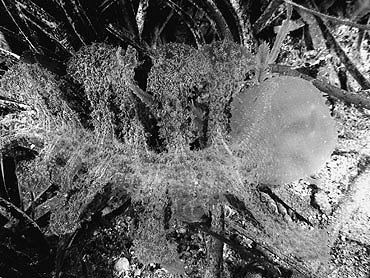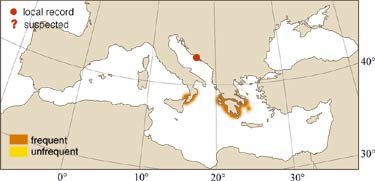
|
Relevant Synonyms
Misidentification
|
|
| photo: A. Zuljevic |
|
SHORT
DESCRIPTION
color :
somewhat translucent with a pale yellow-brown or greenish ground color. The tubercles are brown, and the branched appendages paler.
common size :
usually 10-20 cm. |
DISTINGUISHING CHARACTERISTICS
BIOLOGY / ECOLOGY
habitat :
on Milos Island the specimens were found drifting, swimming and crawling around and among Cymodocea nodosa beds, at 10-12 m in depth, in a geothermally heated area; usually found in muddy seagrass beds or on muddy bottoms 2-3 m deep. |
|
1st
Mediterranean record
|

|
|
DISTRIBUTION
|
ESTABLISHMENT SUCCESS
speculated reasons for success :
|
|
|
MODE OF
INTRODUCTION |
IMPORTANCE TO
HUMANS |
|
KEY
REFERENCES
|
|
|
 ? Melibe rangi Bergh, 1875
? Melibe rangi Bergh, 1875